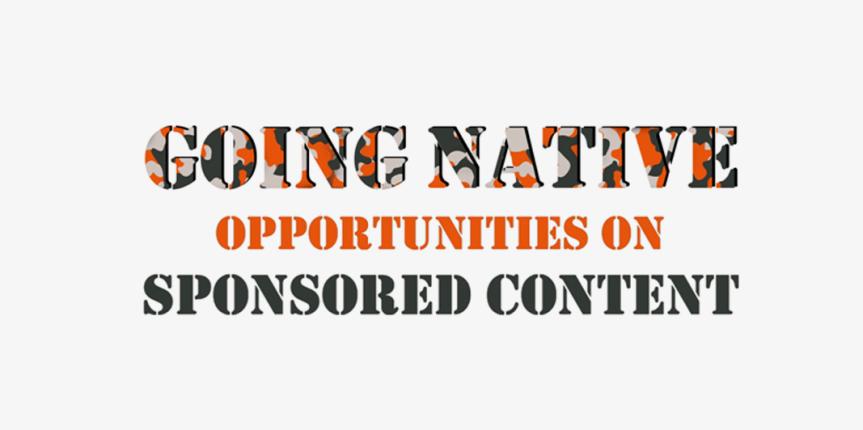
Advertising now has a new face – Native.
Native is perhaps one of the biggest trends in advertising today;it provides a way to advertise without being overtly promotional.
According to exclusive data from Business Insider, spending on native ads will reach $7.9 billion this year and grow to $21 billion in 2018, for the three main native ad types — social-native, native-style display ads, and sponsored content.
The reason advertisers have to constantly reinvent the wheel, is well let’s face it the game just changed. Nowadays, modern customers do not respond to the “old school” laundry detergent commercials featuring mind-numbing dialogue, characters that still portray a bygone era, and a constant flashing product logo.
Now all we are concerned about is the story. And where the story stem from? It sprouts from ideas.
Like so many advertisers in the Middle East, many of us followed the direction set by the US and Europe, (hands up, and be honest) who jumped on the native band wagon, but without a real handle on it? So if you answered yes, like many other advertisers you’re missing “the big picture.” But native advertising is [or should be] first and foremost about thought leadership, not cheap theatrics and slight of hand.
However, the Holy Grail of native advertising [yes the cats out of the bag] comes in the form of thought leadership as communicated via the written word. It can be presented as a guest contributed article and sponsored blog post, or a text-focused mobile or social ad that conveys industry expertise and valuable, non-promotional information for readers, these are the native ads that ultimately have the greatest impact.
Native Ads: Outlets, advertisers, readers and relevancy

Native advertising is still emerging in the online ecosystem and in many ways; we’re still learning the rules of native advertising. And by definition, there are no real industry standards — a native ad on Facebook is inherently different than a native ad on The New York Times.
Netflix sponsored a paid post on The New York Times, tying the content piece to its fictional, women-in-prison series. The advertisement, which explores the topic of women in prison, is an example of how a native ad can look and feel like an organic article from the publisher. This content mirrors the ethos of the publisher’s regular content and tied seamlessly to the themes of the brand or message they are trying to covey.
Netflix avoids being overtly self-promotional, by not brandishing the logo within the content. The only mention of Netflix, apart from the clear label that it’s their sponsored story, is the way in which the topic is cleverly interlaced with their show, “Orange is the New Black”. Suggesting that Netflix is keen to take stand about the issue being reported on, cleverly positioning Netflix as, a transformational thought leader that has the ability to raise awareness of real issues facing todays society, via the documentaries they produce as well its sponsorship of journalism.
Key lesson: Cleverly chosen platforms have the power to turn well-crafted content into a win-win opportunity for both brand and publisher.
Native advertising is at its best, the intelligent person’s marketing. It’ has the power to inform, amuse,educate,and more importantly,it is the glue that brands need to link the consumer to their story.
The future of Native will be paved by contextual content and the ebb and flow of ideas that matter most, fingers crossed that more brands adopt the influential power of Native sponsored content and gravitate away from cheap advertising tricks that lack luster and vitality.






Nice post!